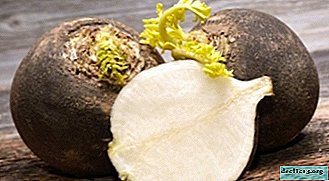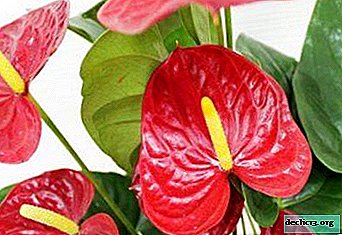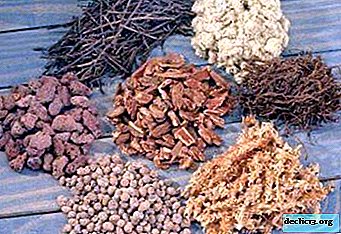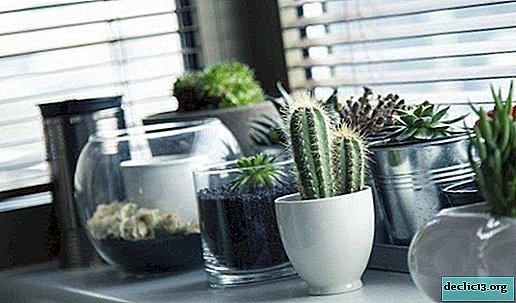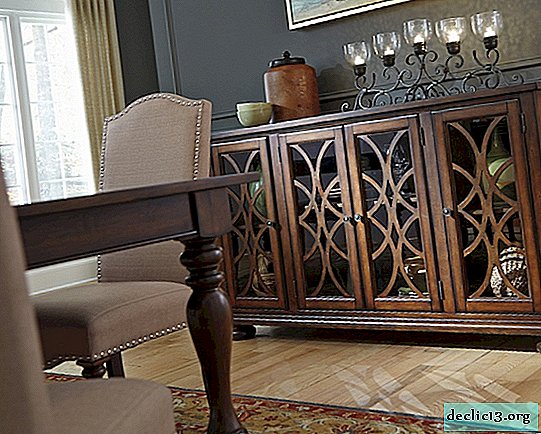Bright beauty afelander - description and photo of the flower, especially the care at home
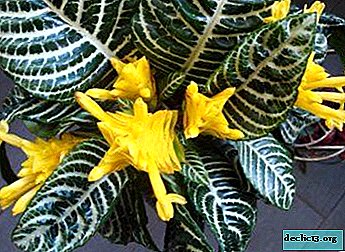 Afelandra is a tropical plant. At home, it is not often grown, since the flower is very finicky, and not everyone wants to take care of it.
Afelandra is a tropical plant. At home, it is not often grown, since the flower is very finicky, and not everyone wants to take care of it.
But do not be upset. From the article you will learn all the subtleties and nature of the afelander, tips for the care and cultivation of this ornamental plant in your home.
And also, what are the ways of reproduction, what diseases and pests should be feared. Why this flower should be in the apartment: its beneficial properties.
Description
Afelandra is a plant that loves moisture and warmth. The rainforests of South and North America are considered his homeland. This is a beautiful decorative indoor flower. Afelandra is a perennial shrub or shrub with large contrasting leaves. In the wild, the plant reaches a height of up to two meters. Domestic ones grow no more than one and a half meters.
The sheet plate is smooth, can be corrugated, shiny. The color of the leaves is dark green, and on its entire surface there is an ornament of white stripes. Afelandra has small flowers.
On a note. Bracts are very beautiful - they are bright and collected together, resemble an ear or a pyramid ten to fifteen centimeters long. There are red, orange or yellow.Other names
The name comes from the two Greek words "aphelis" - simple and "andros" - man. In the literature, the plant is found under the name - "Afelandra".
Value in the house
The main meaning of a flower is its decorativeness. Such a plant will decorate any home. With proper care, flowering will take place twice a year. The flower will fit into any interior and stand out for its beauty among other indoor plants.
Types of indoor plants - description and photo
In the natural habitat, there are about 170 species of plants. However, only two species are suitable for keeping at home - protruding aphelander and orange afelander, but the second species is very difficult to find on sale.
Protruding
The most common species in culture. Homeland is Central America. This is a small evergreen shrub with powerful bare shoots of a reddish color. The leaves are large, growing up to thirty centimeters. They are green and glossy, covered with bright silver-white stripes along the middle and side veins.
The flowers are tubular, collected in spike-shaped inflorescences of a quadrangular shape up to thirty centimeters long. Bracts are bright orange, flowers are light yellow. The corolla has an irregular shape - a two-lipped with four stamens and one pestle. Aphelander blooms in bloom from May to November.

Orange
Mexico is considered its homeland. A stunted evergreen shrub with a reddish (eventually lignified) stem. Leaves grow up to twenty centimeters in length. They have an ovoid shape, pointed at the tips.
The color of the leaves is silvery green. The inflorescence has a tetrahedral shape, sometimes it is the shape of an ear of up to fifteen centimeters high. The flowers are bright orange. This species blooms no more than a week.

Home Care
- Lighting. First you need to choose a good place for a flower. He loves the dim sunlight, so it is best to place it on the eastern or western windowsill. During maximum solar activity, the plant shadows. In winter, it is also important to monitor lighting and provide the plant with extra light. The optimal number of hours of flower lighting will be at least nine.
- Air temperature. Since the plant comes from warm countries, it always needs warmth. At any time of the year, try to maintain a temperature in the region of twenty to twenty-five degrees. In the summer, the afelander should be taken out into the fresh air. If not possible, then it is necessary to ventilate so that the flower always has an influx of fresh air, but beware of drafts.
- Watering. Afelandra requires abundant watering, but do it so that moisture does not stagnate in the ground. If there is excess water in the pan after you have watered the plant, drain it immediately. Watering is worth every few days. In winter, it is worth a little revision of the watering regime.
- The soil. One of the main points is the right soil. It should pass air well and be loose. What should the mixture consist of:
- sand is one part;
- sod - one part;
- deciduous land - three parts;
- peat substrate - one part.
- Fertilizers During intensive growth, systematically feed the afelander with mineral and organic fertilizers. You can take various compounds for indoor plants. Feeding should be done once every two weeks.
- Pruning. It is impossible to imagine care for afelandra without pruning in the spring. As the flower grows rapidly and loses its shape, pruning is essential. At the end of winter, the plant is very pruned.
Reference. Since Afelandra is a delicate flower, pruning will be stressful for her. And so that she recovers faster, it is advised to put a plastic cap on top of the pot.
- Care problems. One of the problems is improper watering, a lot depends on it. You should not overdo it with him, but dry soil is contraindicated. Do not forget that the flower is afraid of drafts.
From the video you will learn how to care for Afelandra at home:
Breeding
Reproduction is of two types: seeds and cuttings:
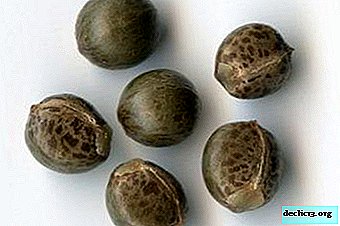 The seeds. Ripe seeds are sown in pre-prepared soil. The room temperature should be twenty to twenty-three degrees. If you germinate the seeds in greenhouses, in which the heating is located below, the sprouts will appear faster. The first flowers will appear already in the year of planting.
The seeds. Ripe seeds are sown in pre-prepared soil. The room temperature should be twenty to twenty-three degrees. If you germinate the seeds in greenhouses, in which the heating is located below, the sprouts will appear faster. The first flowers will appear already in the year of planting.- Cuttings. Cuttings - young shoots or plant tops. Their length should not exceed fifteen centimeters. Usually cuttings are cut in the spring, rarely in winter. To root and grow faster, you can treat with a growth stimulant.
It is recommended to root the plant in wet sand or peat in a pot, which is then covered with a glass lid. The temperature should fluctuate around twenty-twenty-five degrees. Cuttings need to be ventilated and sprayed. Root formation occurs within one to two months.
Diseases and Pests
Disease
- Flying around the foliage. Often this happens when a flower receives little moisture. Even a short period of dryness will lead to a rapid fall of foliage. Another reason could be a low air temperature or a draft. And the last reason why the leaves fall off is the excessive amount of direct sunlight.
- The appearance of brown spots on the sheet. The consequence of such spots is a large amount of sunlight or lack of fresh air. If this is due to the sun, then immediately shade the flower, and if with air, then ventilate more often.
Pests:
- Aphid - a tiny insect that feeds on the juice of a plant. Mostly affects the ends of the flower. In the fight against aphids, such drugs as Akarin, Spark Bio help well.
- Shield - distributed on the lower surface of the leaves. If a brown coating appeared and the foliage began to crumble, then most likely the plant was struck by a scale shield. With minor lesions, it will be enough to wipe the leaves. In severe cases, it is necessary to spray “Fitoverm” and “Actellik”.
Healing properties
The leaves of the afelander have a good effect on the nervous system, relieve fatigue, help with stress, increase efficiency. Sometimes they help even with neuralgia.
Conclusion
With proper care of the plant, you will get beautiful decorative leaves and flowers. If the afelander does not bloom, do not be discouraged, its beautiful foliage fully compensates for this.

 The seeds. Ripe seeds are sown in pre-prepared soil. The room temperature should be twenty to twenty-three degrees. If you germinate the seeds in greenhouses, in which the heating is located below, the sprouts will appear faster. The first flowers will appear already in the year of planting.
The seeds. Ripe seeds are sown in pre-prepared soil. The room temperature should be twenty to twenty-three degrees. If you germinate the seeds in greenhouses, in which the heating is located below, the sprouts will appear faster. The first flowers will appear already in the year of planting.



